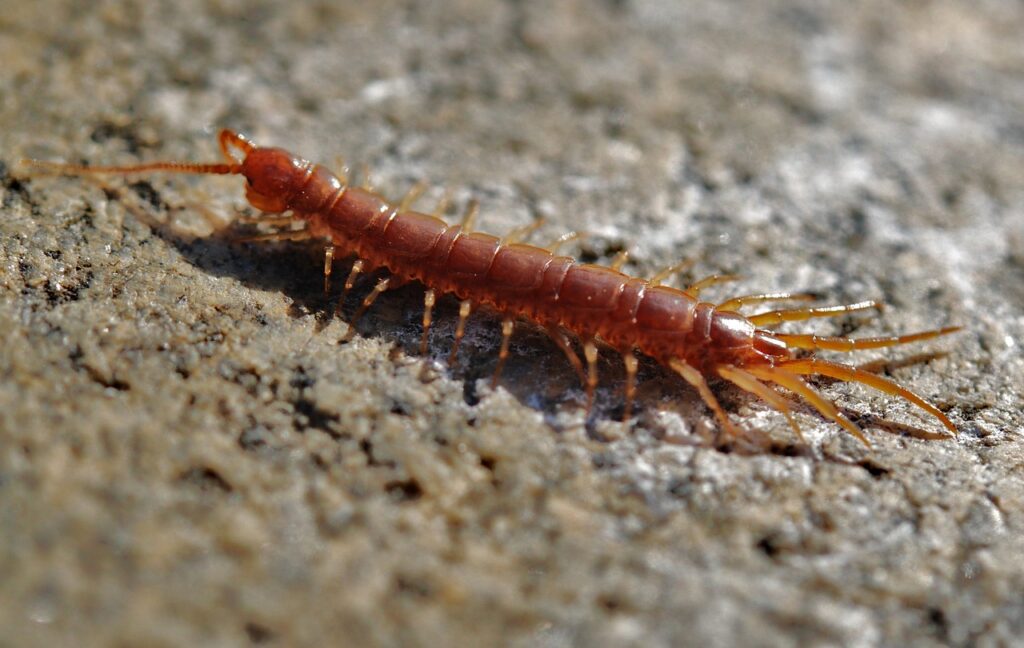What we often call centipedes are actually “millipedes” (from mille “thousand” and pes “foot”). But even though they have many legs, no one has as many as a thousand. The Swedish record is 234 legs [1].
We divide millipedes into monopeds (one pair of legs per segment) and bipeds which have more than one pair of legs on some segments. There are also millipedes and dwarf millipedes. Monopods are predators and, therefore, eat other animals. They are easy to recognise because they are super fast. They are greedy, and giant millipedes around the Mediterranean can eat frogs and mice. However, despite this, millipedes are not dangerous, and Nordic millipedes do not bite humans. The bipeds are herbivores that move more slowly with a wave-like motion, like a faster worm [1, 2, 3].
Centipedes belong to the order Arthropoda. They are related to invertebrates such as insects, spiders, scorpions, crabs and lobsters. They have long, segmented bodies with many legs. Their hard outer shell does not help them retain water, so they must live in moist places to avoid drying out. Centipedes are fierce predators (except for bipeds) and use speed and claw-like structures to catch their prey. All species live on land, and most are native to soil and litter. Some live under loose bark and in decaying wood. Many are found in gardens and other cultural habitats [1, 2, 3].
Key Functions
● Keeping pests out of your home
● Decomposition of fallen leaves
● Mixing and aeration of the soil
Threat
● Exploitation
● Altered hydrology
● Logging and clearing
● Removal of dead wood and clear-cutting
● Overgrowth of grassland for the species that depend on its open spaces
Common species
There are 15,500 known species worldwide, of which about 100 live in Sweden. The largest group among the millipedes is the bipeds, with about 11,000 species.
Out of approximately 100 species identified in Sweden, 15 are red-listed, with six of them falling under the category DD, indicating a need for more knowledge. A significant portion of the red-listed species are assessed as fragmented with small populations, while only five are categorized as declining. Most of these species inhabit forest landscapes, except for two that reside along seashores [1].
Some species to discover in nature:
● Brown Stone Centipede (Lithobius forficatus)
Artfakta – Brown Stone Centiped ![]()
● Pill Millipede (Glomeris marginata)
Artfakta – Pill Millipede ![]()
● Julid millipede (Cylindroiulus caeruleocinctus)
Artfakta – Julid Millipede ![]()
● Striped Millipede (Ommatoiulus sabulosus)
Artfakta – Striped Millipede ![]()
● Boreal Yellow-headed Soil Centipede (Geophilus flavus)
Artfakta – Boreal Yellow-headed soil centipede ![]()
Sources
June 2023, TÄNKOM | Revised February 2024 RETHINK




